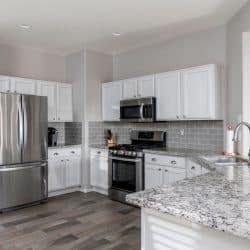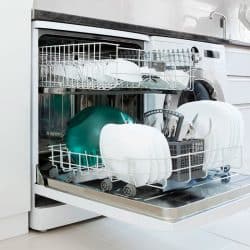If you're looking for clean lines in your kitchen's design, then you might have considered getting a counter-depth refrigerator. We've looked into the popularity of these counter-depth refrigerators and in this post, we will talk about their dimensions, their benefits and disadvantages, and how they will seamlessly blend in with your current kitchen style.
The standard counter depth refrigerator dimensions typically measure 24 to 25 inches deep for the basic box. But the overall depth (with the doors included) differs from manufacturer to manufacturer. A counter-depth refrigerator will also measure anywhere from 30 to 36 inches wide and 66 to 72 inches tall.
Knowing the exact measurements of counter-depth refrigerators can be a little confusing. This is why we've collected all the necessary information you will need to measure when you look for a refrigerator. In this post, we'll also share with you some tips on how to pick the right refrigerator, the pros and cons, as well as considerations you will have to look into.
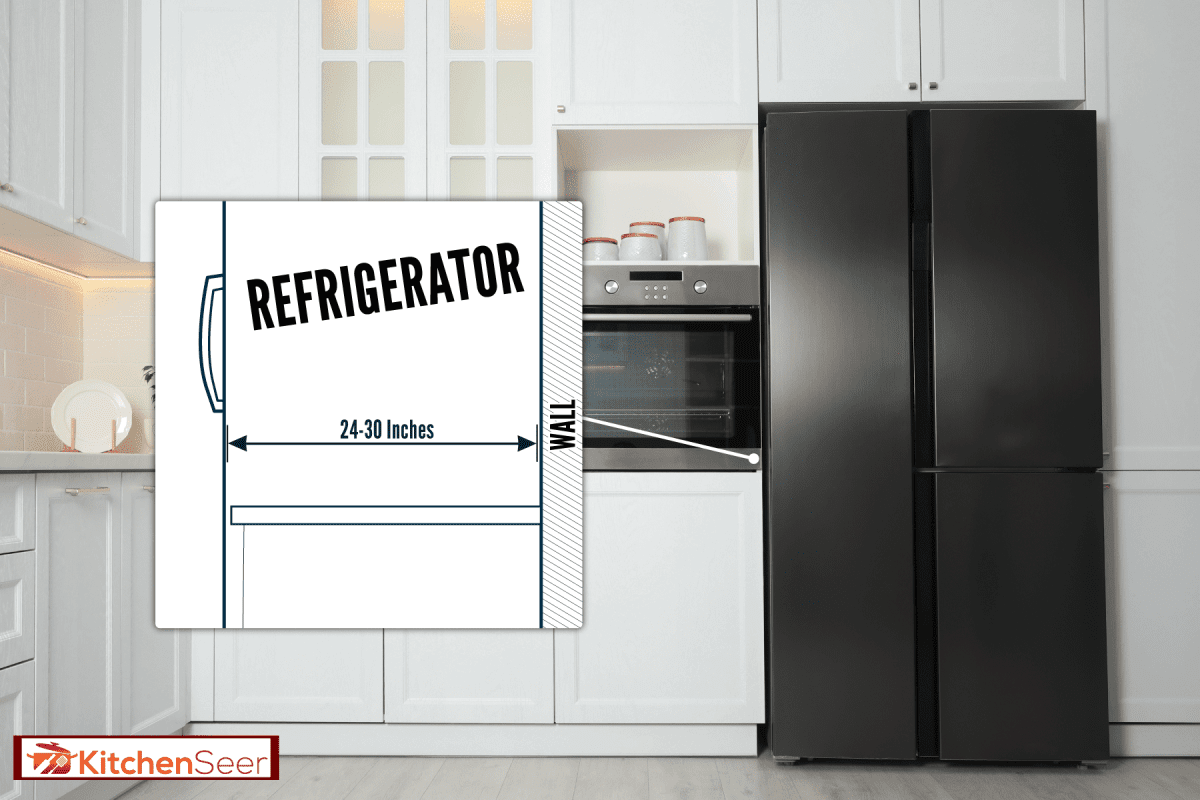
What Are The Standard Counter Depth Refrigerator Dimensions?
A refrigerator in the kitchen is arguably one of the most important things to have for the home. When you purchase a refrigerator, finding a standard depth refrigerator is more common. However, if you're planning to design your kitchen aesthetically pleasing, you might find the standard refrigerators sticking out like a sore thumb in the kitchen.
If you prefer clean lines and a seamless fit for appliances, then it might be a good idea to consider counter-depth refrigerators. These refrigerators are made to blend seamlessly with the lines of standard kitchen counters, which gives them the advantage of not sticking out of the counters as standard refrigerators do.
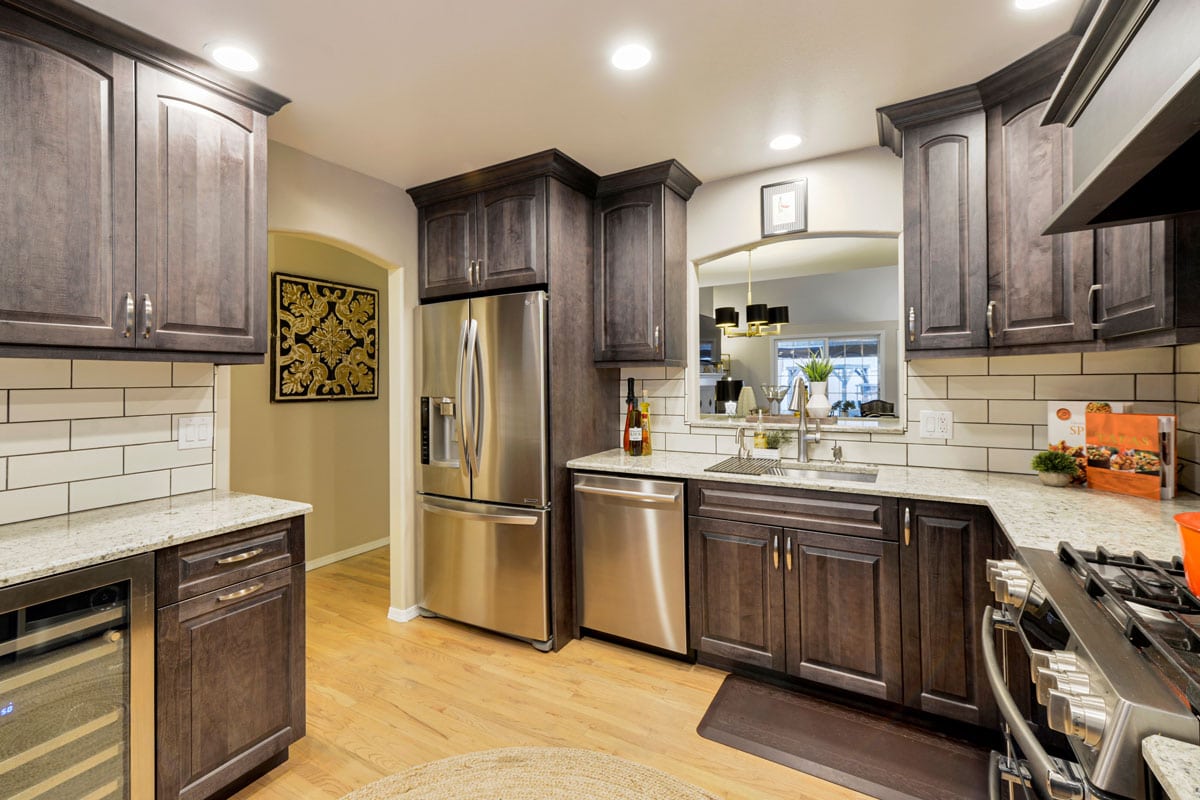
So, how does a counter-depth refrigerator differ from a standard depth refrigerator? The answer lies in the appliance's size and dimensions. Most standard depth refrigerators measures around 36 inches deep.
A counter-depth refrigerator, on the other hand, is about a foot shorter at around 24 to 25 inches deep for the box alone, which fits perfectly with the standard counter. A standard kitchen counter is about 25 inches deep, so the full dimensions of the counter-depth refrigerator can go up to 30 inches, including the door and the handles.
As for the height and width of counter-depth refrigerators, manufacturers tend to make them a little wider and taller than standard refrigerators. This is because counter-depth refrigerators are shallower, so to compensate for that, you will find their varying dimensions for height and width.
The measurement for a counter-depth refrigerator's height and width isn't too extreme from a standard refrigerator. Typically, these refrigerators are about 30 to 36 inches wide, and they are usually about 66 to 72 inches tall.
Generally speaking, counter-depth refrigerators vary in size from manufacturer to manufacturer. This is why it is very important that you measure the area where you'd like to put your refrigerator. There is no standard measurement for counter-depth refrigerators, so take some time to look into this before purchasing this appliance.
How To Pick The Right Refrigerator
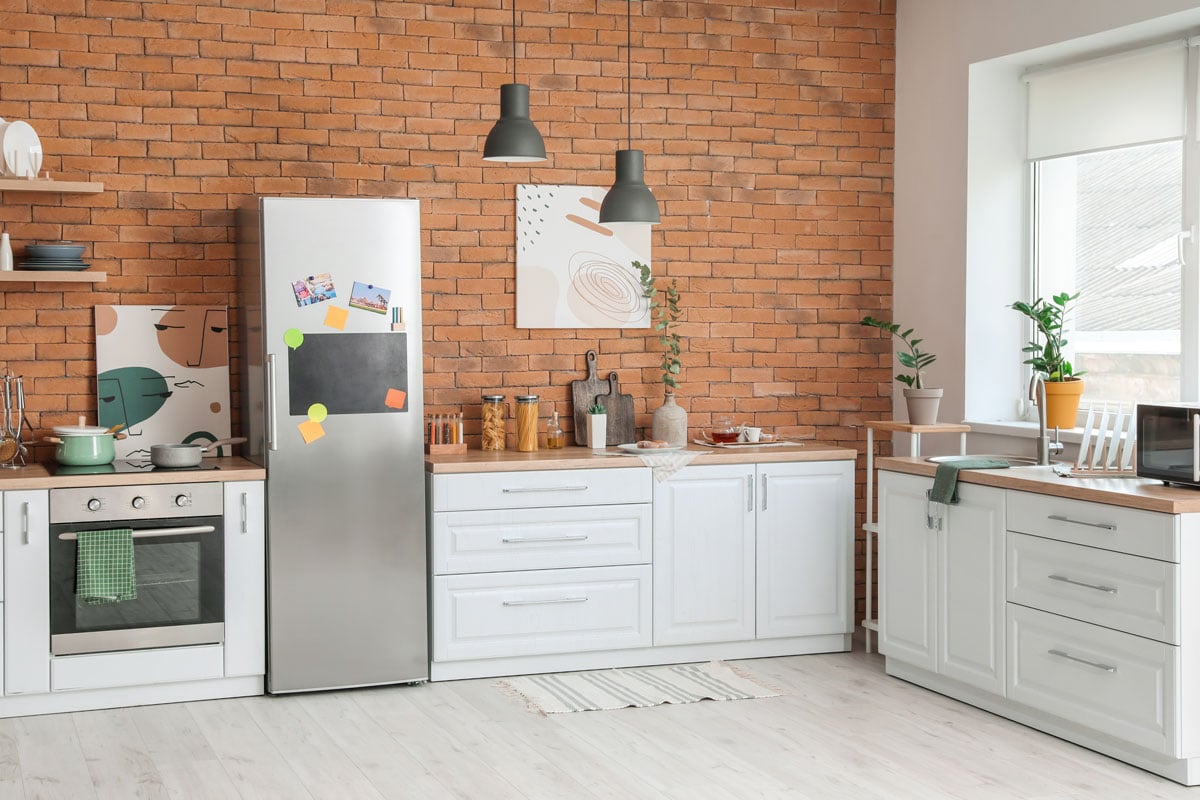
Choosing a counter-depth refrigerator can be a little complicated because of the different sizes. Therefore, it is very important that you know how to measure your space to see if your preferred refrigerator will fit. Here are the steps on how you can get an accurate measurement for your counter-depth refrigerators.
1. Know Where to Place the Refrigerator
One of the most important things you should know before purchasing a refrigerator is where you will be putting it. If your kitchen is new or is being remodeled, remember to pay close attention to the depth, width, and height of the cabinet cutout plan.
Alternatively, you can simply place your refrigerator on the end of the counter so you won't have to worry about the width of your refrigerator.
If you already have a standard refrigerator and you plan on changing it to a counter-depth refrigerator, make sure that the cabinet cutout can accommodate the slightly different dimensions. If not, you should consider just getting another standard refrigerator or remodeling your kitchen cabinets.
2. Measure the Depth
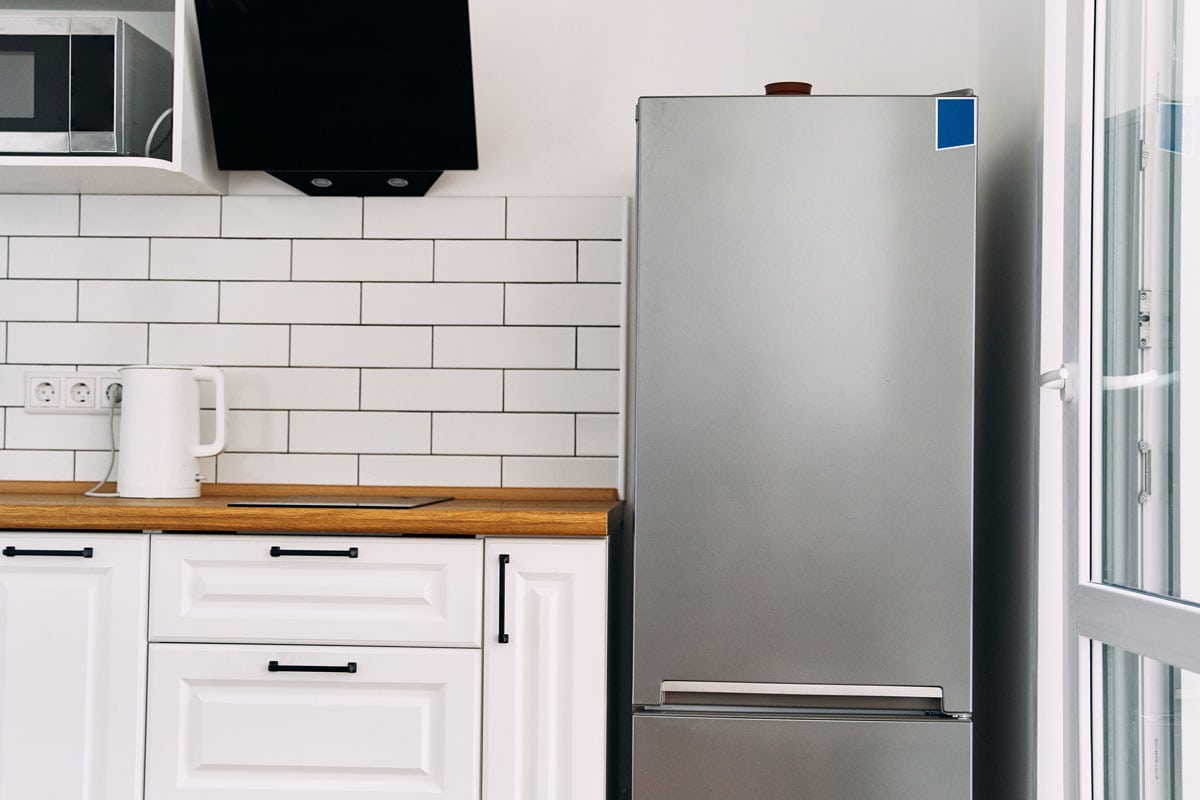
Counter-depth refrigerators are dependent on the available space on your counter. It is very important to measure the depth of your counter because the doors of the counter-depth refrigerators might hit the edge of the cabinet cutout if they are not measured properly.
Start by measuring the depth of the counter from the wall up to the edge of the countertop. Make sure that you go beyond the backsplash. Typically, the measurement of your counter will range between 24 to 25 inches, and this will coincide with the size of a standard counter-depth refrigerator box without the doors and handles.
Add about an inch or two of breathing room for your refrigerator to allow proper ventilation for the appliance. Make sure to add this measurement to the back and the sides of your refrigerator.
Most counter-depth refrigerators will measure anywhere from 28 to 31 inches deep with the doors and handles. When measuring the location of your new refrigerator, you should consider an extension of about 1 or 2 inches beyond your countertop edge to allow the doors to open properly.
Here are the depth measurements that you should take when you check out a refrigerator for purchase:
- Depth with the doors
- Depth of basic box (without the door)
- Depth of closed refrigerator doors with and without handles
- Depth of the refrigerator doors opened at 90 degrees
- Depth with the drawers open
3. Measure the Counter Width and Height
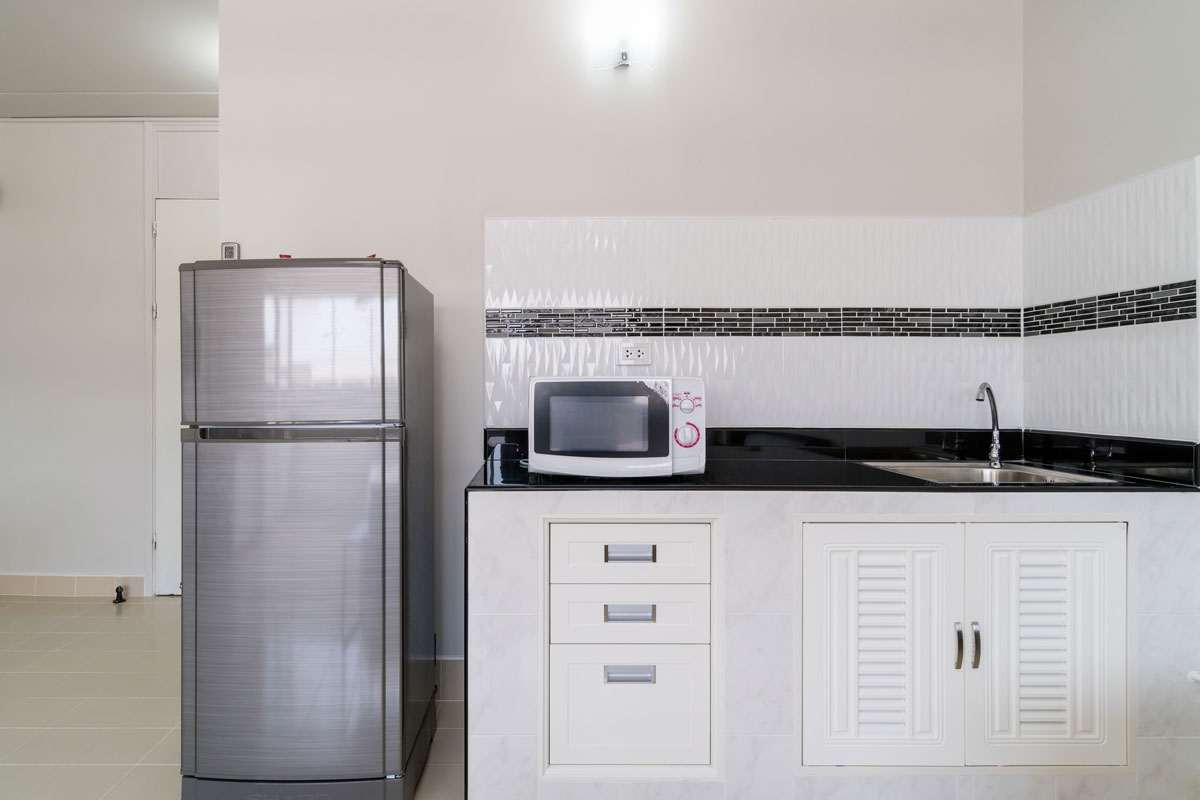
Manufacturers of counter-depth refrigerators compensate for the shallow depth by adding width and height. This is the reason why counter-depth refrigerators are wider and taller than your standard refrigerators.
When measuring the width of your cabinet cutout, make sure to take the measurements from the narrowest point (or the inside edges of the cabinet cutout.) Take this measurement and subtract about an inch or two to allow your refrigerator some ventilation space. If your refrigerator will be placed beside a wall, make sure to leave about 4 inches so the doors can open.
Measure the height of your cabinet cutout by starting from the floor all the way to the bottom of the cabinets that will be above your refrigerator. Just like the width, subtract a half-inch to about an inch to account for the ventilation of the appliance.
What Are The Pros and Cons of Counter Depth Refrigerators?
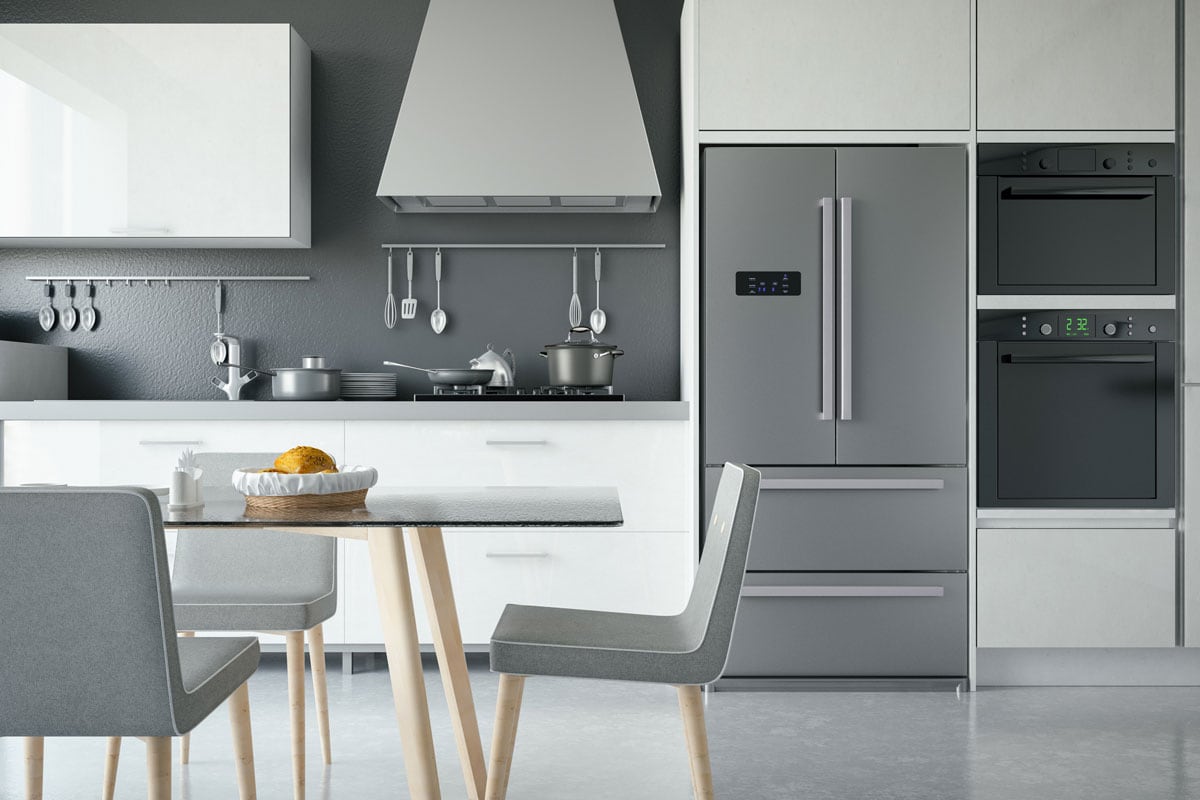
Counter-depth refrigerators are great if you are looking for a built-in look for your kitchen. However, these refrigerators still have some benefits and some disadvantages that you have to consider before purchasing this appliance.
Pros:
Streamlined Look
A counter-depth refrigerator will give your kitchen a streamlined look because it will be uniform with your kitchen counters. Since it doesn't protrude from the counter as a standard refrigerator does, your kitchen's layout will look seamless.
Convenient Access
Since counter-depth refrigerators are shallower, it provides easier and more convenient access to reach the back of the fridge. It is easier to clean, and it works better for your back because you won't have to bend so much to reach further in.
Easy to Move Around
With the refrigerator placed flush against the counter, it is easier to move about the kitchen without creating a bottleneck in the traffic area of the kitchen. No more problems hitting the doors or handles when you're moving around.
Great Storage Possibilities
With their wider size, counter-depth refrigerators provide better storage possibilities for different items. You will also have more space because of the added length that you will not get from a standard refrigerator.
Cons:
Wide Profile Height Challenge
With a wider and higher profile, some people might find the counter-depth refrigerator a little bit challenging to work in the kitchen. A wider profile will mean that it will take more cabinet space. On the other hand, a higher profile might mean that a little extra help will be needed if items are on the top shelf for the shorter people.
Shorter Compartments
With a shallow depth, counter-depth refrigerators tend to have shorter crispers, deli compartments, and freezer storage. This might mean that you'll have to be creative when you need to store longer items such as trays or plastic food containers.
Needs More Clearance
If you are getting a single-door counter-depth refrigerator, you will need more clearance to allow the door to swing open properly. Otherwise, you won't be able to open it at a 90-degree angle if the area placement is too narrow.
Final Thoughts
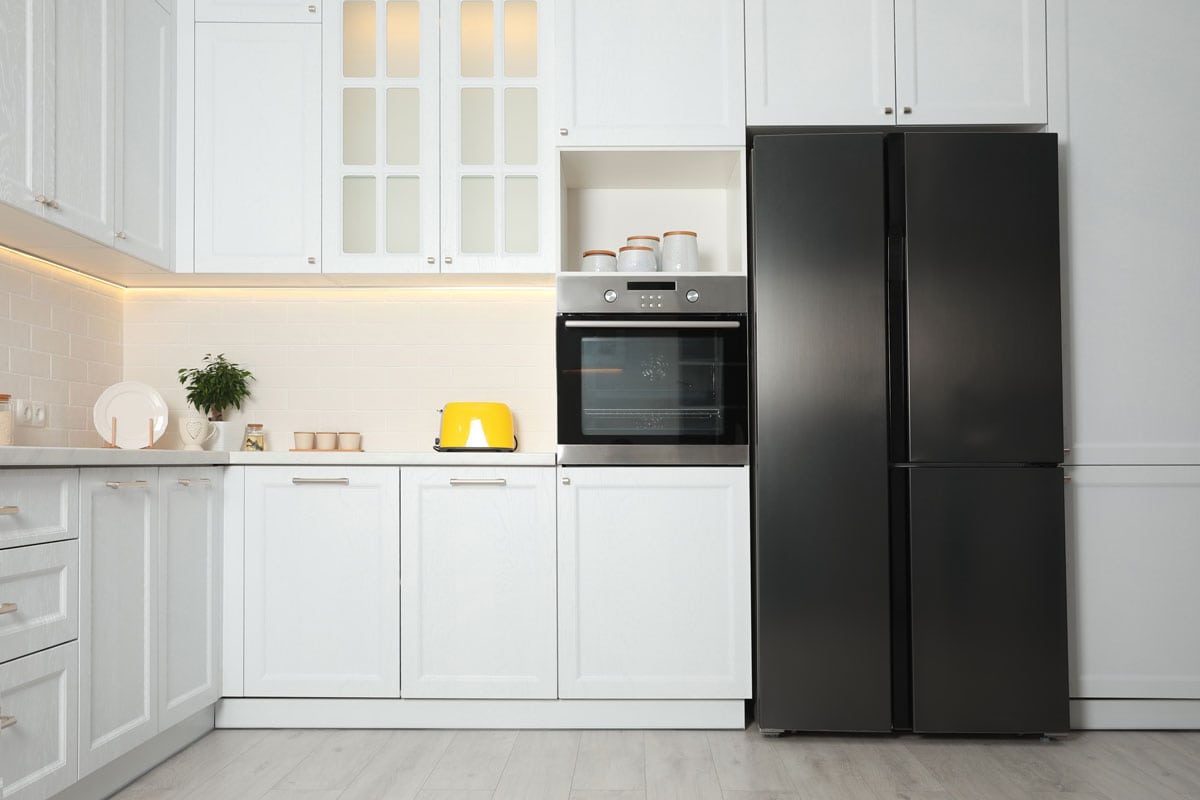
Redecorating the kitchen to be more aesthetically pleasing can be a little challenging, but fortunately, new appliances have made it a lot easier nowadays. Counter-depth refrigerators are popular for looking seamless in the kitchen, and they look absolutely great with any style.
Are you redecorating and moving your refrigerators around the kitchen? We've got some valuable information that might help you:
Can A Refrigerator Be Next To A Stove Or Oven? [And How Close]
How Long Should Refrigerators Sit After Moving?

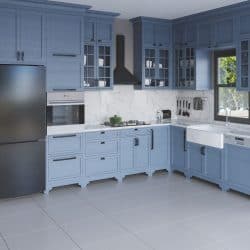
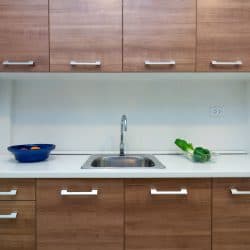
![Interior of modern comfortable kitchen, How Big Is A Refrigerator? [Dimensions Explored]](https://kitchenseer.com/wp-content/uploads/2022/01/Interior-of-modern-comfortable-kitchen-250x250.jpg)
